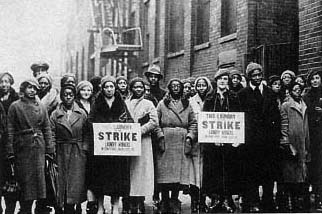Harry Targ
Growing Up with Fear: Polio
As an older person I remember
the three fears of my youth (early 1950s): polio, the bomb, and communism. All
three were interwoven into the public consciousness and even children like me
learned fear early.
While the polio threat was
real (as is the coronavirus contagion now) I internalized a sense that each of
us was alone in an alien world, undefined others could be threats to our
survival, and acting in and on the world could be dangerous. Sure I was a kid
and did not think these “deep” thoughts per se but I, a child, internalized
these ideas. As to the polio disease itself, every summer brought trepidation.
Don’t exercise too much. Be wary of other kids I did not know. Perhaps most of
all don’t go to the beach, the playground, the lake.
And the reality was that a
few kids on my block did, in fact, contract polio. In a few cases victims of
polio became paralyzed or could not breathe outside an oxygen tent. My next-door
neighbor friend had an older brother who was disabled from polio and a friend
down the street contracted polio; it affected his vocal chords. So we
experienced polio directly and indirectly. (As I remember Jonas Salk sought no
profit from his discovery).
So the fear of disease and
death was/is in the air figuratively and literally. Inevitably it becomes part
of our political culture. And, as I am arguing, the fear of polio paralleled
the other fears, sometimes becoming a metaphor for them. (I was reminded of Albert
Camus' powerful novel, The Plague, which was about a literal plague, and
fascism, and how people responded to either or both).
This was scary stuff.
Fear of the Bomb
In addition, all people
growing up in the 1950s, experienced “duck and cover” exercises in school.
Since an atomic war was always a possibility (some media pundits tried to
convince us it was inevitable), putting our bodies underneath a desk or
covering our heads sitting in a hallway near our lockers would protect us from
surprise attack. And we knew our only hope of survival was to construct enough
bombs and airplanes to retaliate against the demonic enemy, the Soviet Union.
Fear of Communism
And finally, the most
virulent unseen plague (to use the powerful metaphor of Albert Camus, in “The
Plague”) was communism. Communism could be anywhere. As former FBI agent
Herbert Philbrick immortalized in a popular television show, “I Led Three
Lives,” communists were lying, cheating, malevolent human beings who were out
to undermine our democracy. Alien communists were everywhere: in our schools,
in trade unions, among well-meaning supporters of civil rights, in our
churches. As polio destroyed our bodies, communism destroyed our minds and our democracy.
The invisible germ of the polio plague paralleled the secretive works of
enemies in our midst.
One Further Example of Politization: Continuing
the Anti-Cuba Crusade
“There is COVID-19 in Cuba and I do not believe
there is only three (cases). I believe there is a heck of a lot more and it
poses risk to the people of Miami-Dade County and the state.” (Mayor Carlos
Gimenez, Walter Lippman, Cuba News, March 12, 2020).
The mayor of Miami Carlos Gimenez
joined by the governor of Florida on March 12 called on the United States
government to cancel all flights from Cuba to the United States. Ironically, Cuba
is the only country which has developed a medication that could mitigate corona
virus and a country with only three confirmed cases of persons testing positive
for the virus (all three arrived in Cuba from Italy). The mayor’s statement has
to be understood in the context of Florida politicians who have made careers by
opposing the Cuban revolution.
Contagions of Mind and Body
So the great fears of the
1950s, the bomb, communism and polio became fused in a cosmology that led us to
quietism, fear, and self-absorption. Our elders became more susceptible to
accepting the words and deeds of our political leaders. This made the world of
the Cold War even more dangerous than it might have been, perhaps leading the
world to take dangerous paths that could have been avoided.
Today we experience climate
crises, growing inequality, global and national violence, and a return to
virulent forms of white nationalism, sexism, homophobia, anti-Semitism, and
Islamophobia. And people all over the world are mobilized to say “no” to these
disasters. In addition, there is now another
real threat to human survival.
The coronavirus could lead,
of necessity, to human cooperation to defeat this disease, or it could be used
as a pretext to build new walls, reify borders, blame others for the problem.
And, in the face of this new crisis, we might withdraw from the world, seeking
to protect ourselves and our loved ones and adopt the fatalism that gripped the
popular culture of the 1950s.
Perhaps the lesson to be
learned from this new crisis is that we cannot let pessimism and fear deflect
us from our daily lives and continuing to work to achieve a better world.





